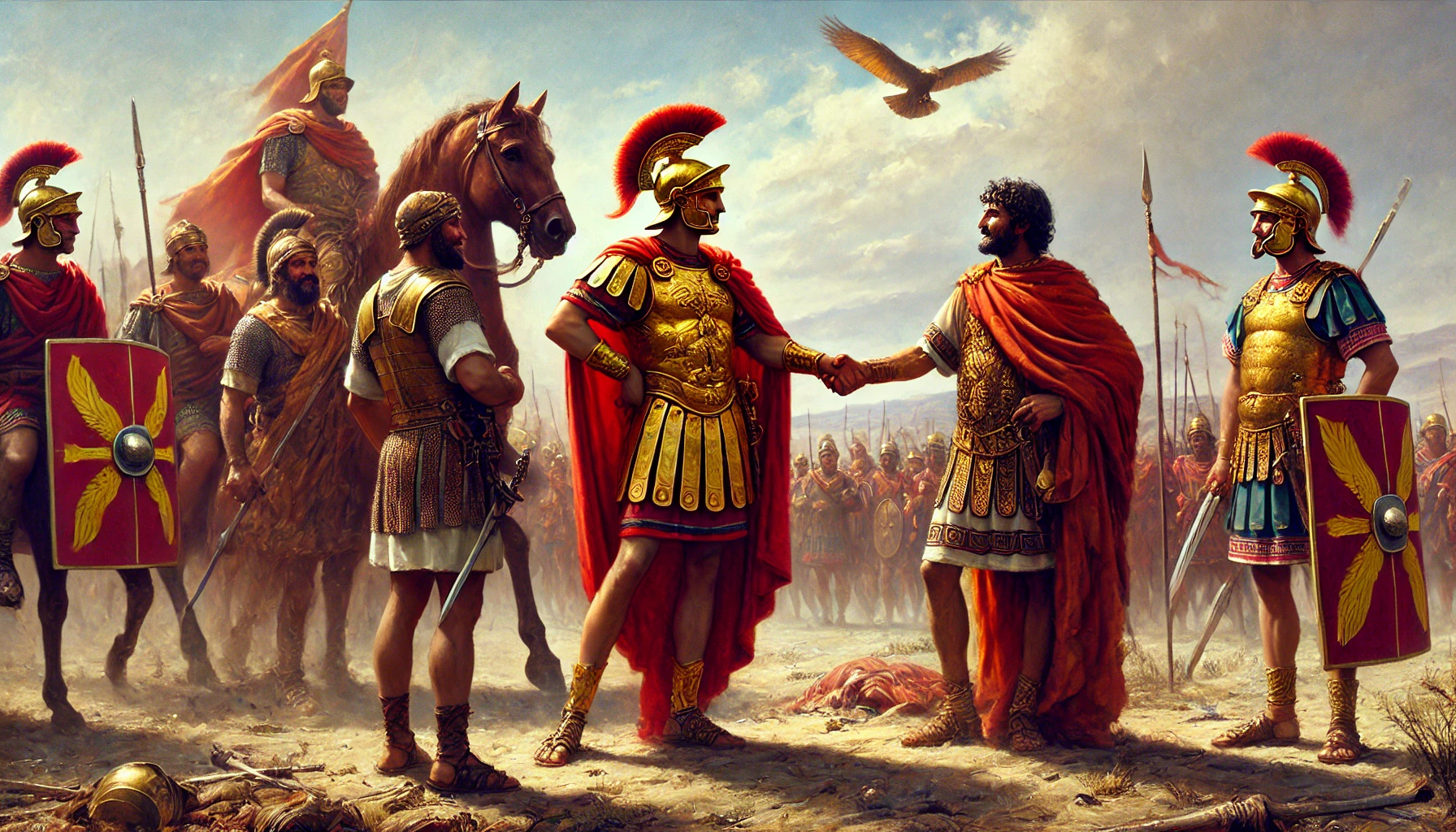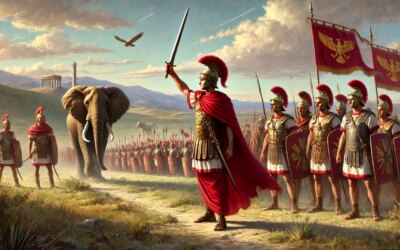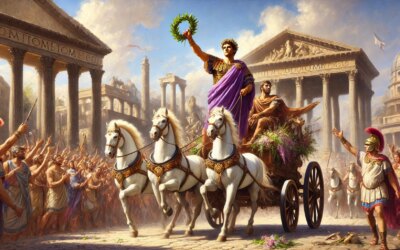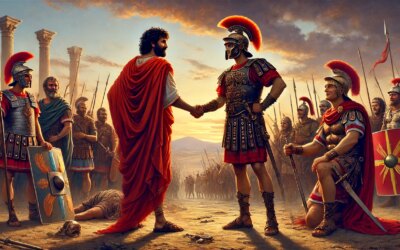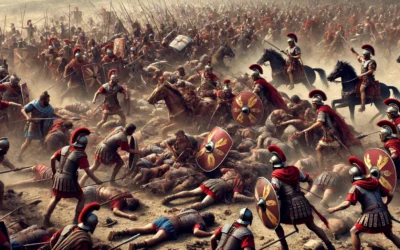Introduction: The Clash That Ended an Era
In 202 BC, the fields of Zama in North Africa witnessed the dramatic end to one of antiquity’s greatest rivalries. Roman general Scipio Africanus faced Carthage’s legendary Hannibal Barca in a final confrontation that would decide the fate of the western Mediterranean. Central to Rome’s triumph was a critical alliance with King Masinissa of Numidia—an alliance forged on the eve of battle, combining military genius with local mobility and political strategy.
The Road to Zama
For over a decade, Hannibal had ravaged Italy, winning battles but unable to secure final victory. Meanwhile, Rome adapted, restructured, and ultimately brought the war to Carthage’s doorstep. Scipio, having conquered Spain, crossed into Africa to threaten Carthage directly, forcing Hannibal to return home from Italy. It was here, near Zama Regia, that the two titans would meet for the first and last time.
Scipio Africanus: The Roman Strategist
Publius Cornelius Scipio, barely in his 30s, had already carved a name for himself by defeating Carthaginian armies in Hispania and capturing New Carthage. Known for his adaptability and charismatic leadership, he approached warfare with a blend of discipline and audacity. Aware that Hannibal still posed a lethal threat, Scipio sought local allies to tip the balance in his favor.
Masinissa: The Numidian Wildcard
Masinissa, prince of the eastern Numidians, had once fought alongside Carthage but had grown disillusioned. Recognizing Rome’s rising power—and likely enticed by the promise of a unified Numidia—he joined forces with Scipio. His cavalry, swift and experienced in desert warfare, would prove decisive. Their meeting, depicted in Roman and later historical accounts, symbolized the convergence of two political destinies united against a common foe.
The Battle of Zama
The battle itself was a masterclass in tactical innovation. Hannibal deployed a line of elephants, but Scipio cleverly created corridors in his infantry ranks to absorb the charge. Roman discipline held firm. Meanwhile, Masinissa’s cavalry, positioned on the flanks, engaged and routed the Carthaginian horsemen. They later returned to strike Hannibal’s rear, sealing the encirclement. Rome’s lines held; Carthage’s broke.
Aftermath: The End of Carthaginian Power
Hannibal survived but Carthage did not. The resulting peace treaty stripped Carthage of its navy, overseas territories, and independence in foreign affairs. Masinissa was confirmed as ruler of a united Numidia under Roman auspices. Scipio earned the title “Africanus” and Rome emerged as the uncontested master of the western Mediterranean. Zama marked the definitive end of the Second Punic War.
Legacy of the Alliance
The partnership between Scipio and Masinissa is a rare moment of mutual benefit in Roman foreign policy. Masinissa’s dynasty endured for over a century, though ultimately absorbed by Rome. Scipio’s victory set the stage for the Republic’s imperial expansion. Their meeting was not only strategic, but symbolic—Rome now understood the value of diplomacy as much as swords.
Conclusion: When Two Worlds Met
In 202 BC, under the North African sun, Scipio Africanus and Masinissa joined hands before history’s stage. Their alliance, forged in urgency and sealed in battle, shaped the course of Roman and Mediterranean history. Zama was not only a victory of Rome over Carthage—it was a triumph of calculated friendship, strategic foresight, and the enduring legacy of two leaders who saw the future and seized it.

